When the space between the plates of a parallel plate condenser is completely filled with two slabs of dielectric constants K1 and K2 and each slab having area A2 and thickness equal to distance of seperation d as shown in the figure.
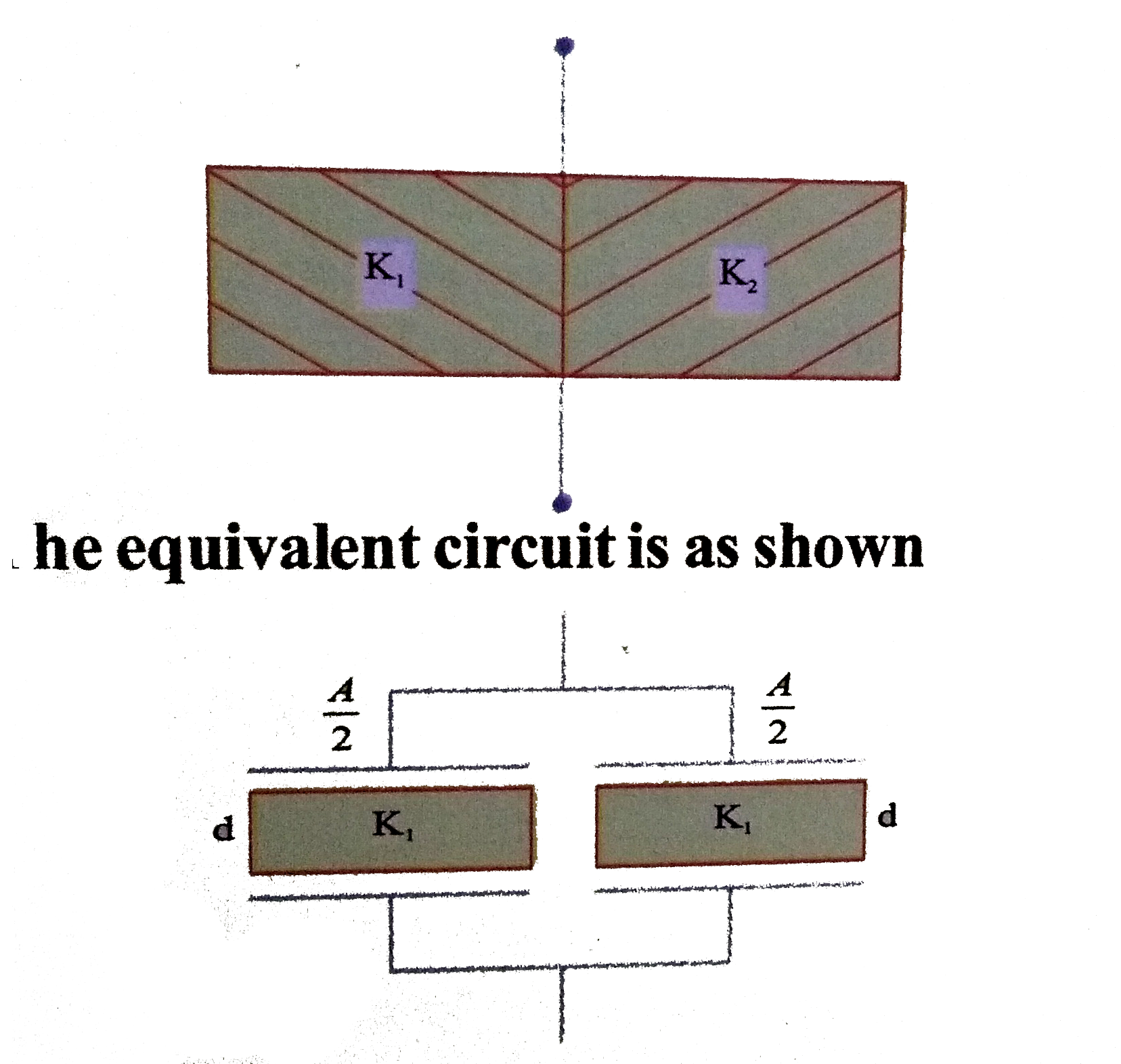
Fig. the equivalent circuit is as shown.
 .
.
(a) Capacity of the left half C1=K1ε0A2d
(b) Capacity of the right half C2=K2ε0A2d
( c) C1 and C2 may be supposed to ve connected in parallel then effective capacity
C=C1+C2=ε0Ad(K1+K22)
C=C0(K1+K22) where C0 is capacity of capacitor without dielectric.
(d) Effective dielectric constant K=K1+K22.
Topper's Solved these Questions
- BOOK - NARAYNACHAPTER - CAPACITANCEEXERCISE - C.U.Q54videos
CAPACITANCE
- BOOK - NARAYNACHAPTER - CAPACITANCEEXERCISE - Assertion & Reasoning16videos
CAPACITANCE
- BOOK - NARAYNACHAPTER - ATOMS EXERCISE - EXERCISE -447videos
ATOMS
- BOOK - NARAYNACHAPTER - COMMUNICATION SYSTEMEXERCISE - Level-II(H.W)25videos
COMMUNICATION SYSTEM
Similar Questions
When the space between the plates of a parallel plate condenser is completely filled with two slabs of dielectric constants K1 and K2 and each slab having area A and thickness equal to d2 as shown in the figure
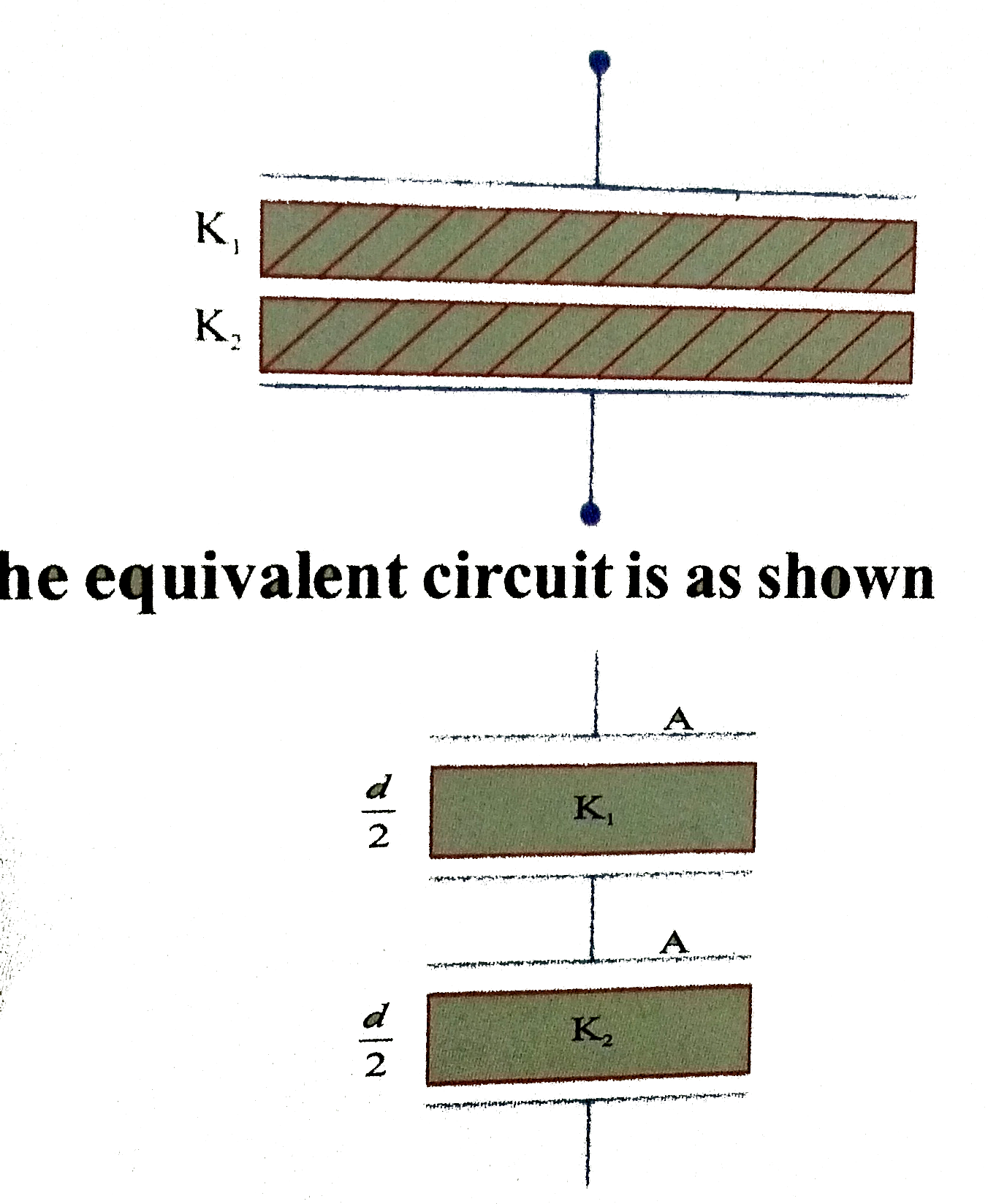
Fig. The equivalent circuit is as shown.
 .View Solution
.View SolutionTwo dielectric slabs of dielectric constants K1andK2 are filled in between the two plates, each of area A, of the parallel plate capacitor as shown in the figure. Find the net capacitance of the capacitor.
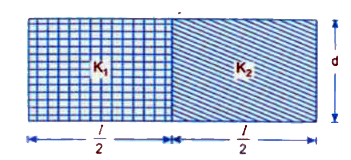 View Solution
View Solution
Knowledge Check
- Question 1 - Select One
The distance between the plates of a parallel plate condenser is 8mm and P.D.120 volts. If a 6mm thick slab of dielectric constant 6 is introduced between its plates, then
Athe charge on the condenser will be doubledBthe charge on the condenser will be reduced to halfCthe P.D. across the condenser will be 320 voltsDthe P.D. across the condenser will be 45 volts - Question 2 - Select One or More
In figure half of the space between the plates of a parallel plate capacitor is filled with dielectric material of constant K. Then which of the plots are possible?
 A
A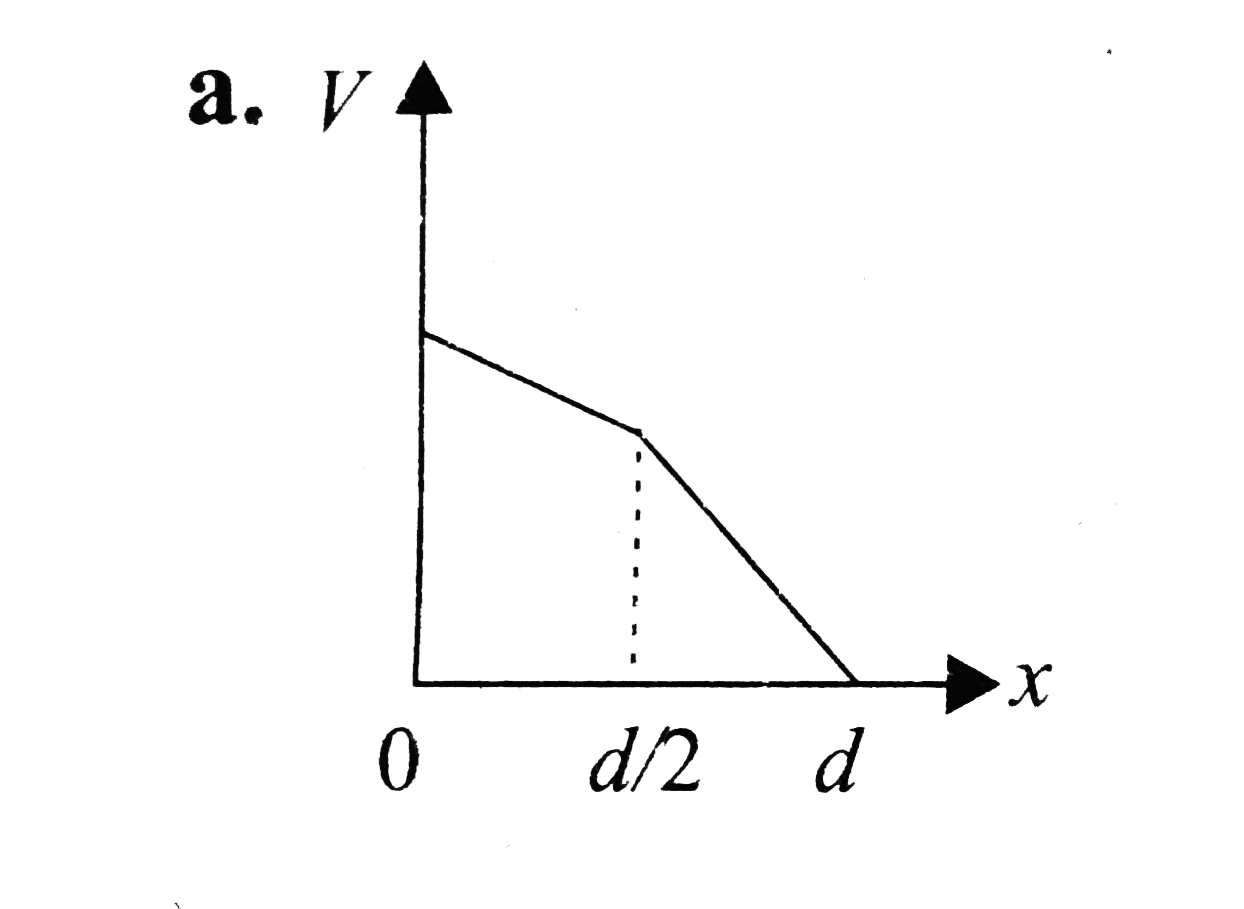 B
B C
C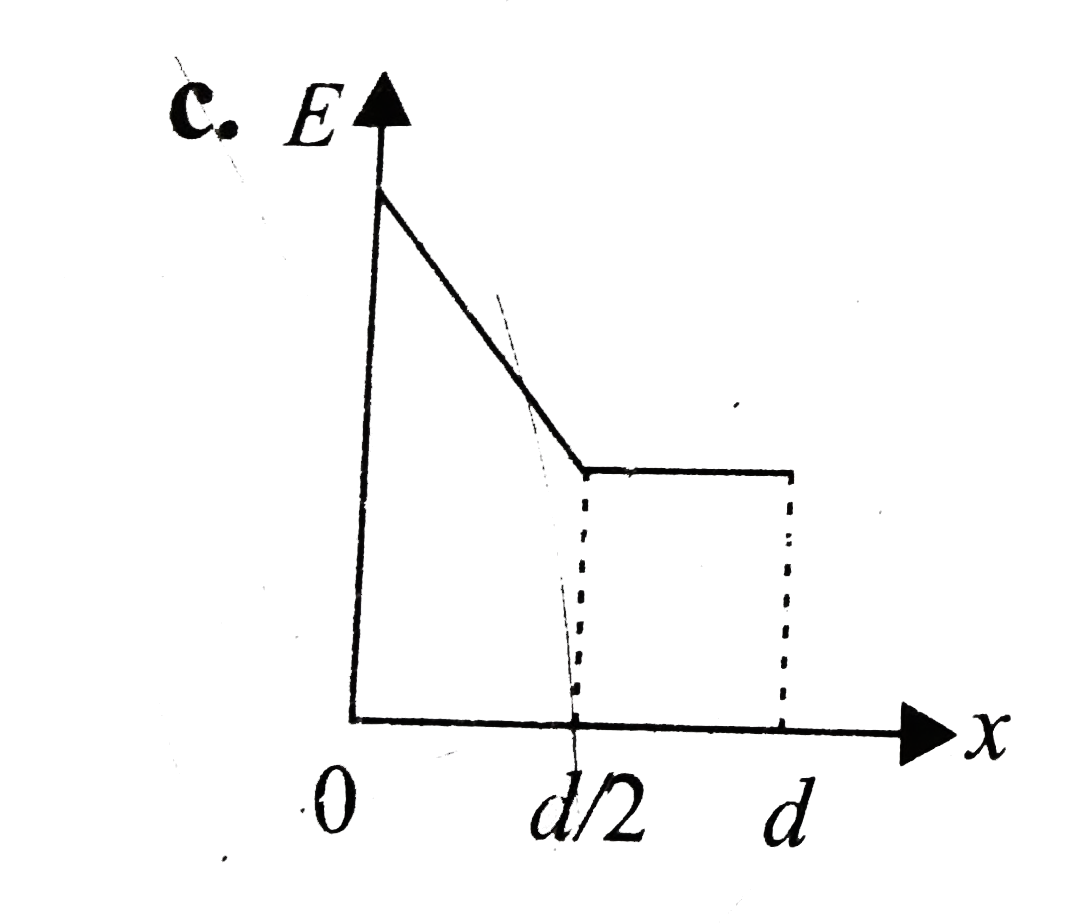 D
D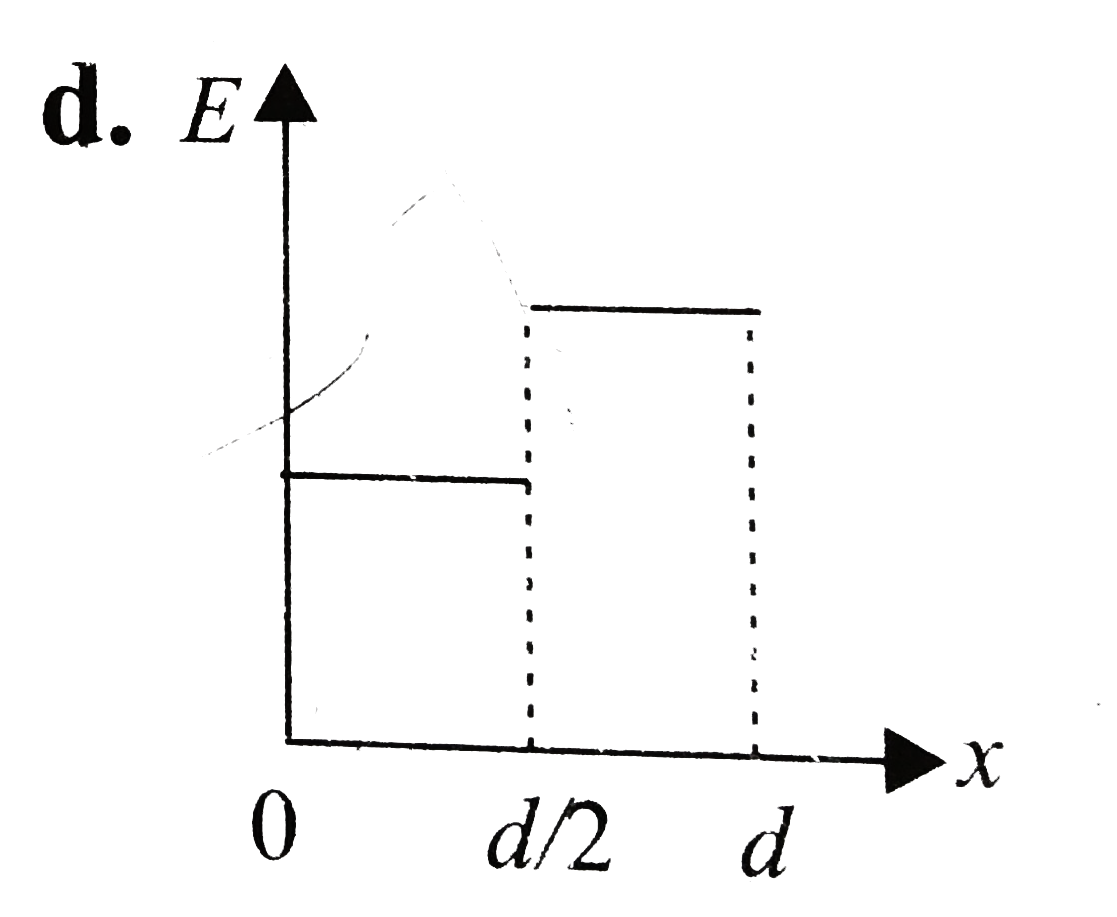
- Question 3 - Select One
The separation between two plates of a parallel plate condenser is filled with two dielectric media as shown in figure . The ratio of its capacities , with and without dielectric , is
 AK1(K1+K2)B2K1K2/(K1+K2)C(K1+K2)/2DK2(K1+K2)
AK1(K1+K2)B2K1K2/(K1+K2)C(K1+K2)/2DK2(K1+K2)
You are given an air filled parallel plate capacitor c1. The space between its plates is now filled with slabs of dielectric constant k1andk2 as shown in c2. Find the capacitances of the capacitor c2 if area of the plates is A distance between the plates is d.
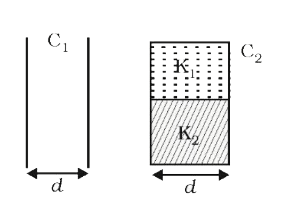 View Solution
View SolutionThe capacitance of a parallel plate capacitor with plate area A and separation d is C. The space between the plates in filled with two wedges of dielectric constants K1 and K2 respectively. Find the capacitance of resulting capacitor.
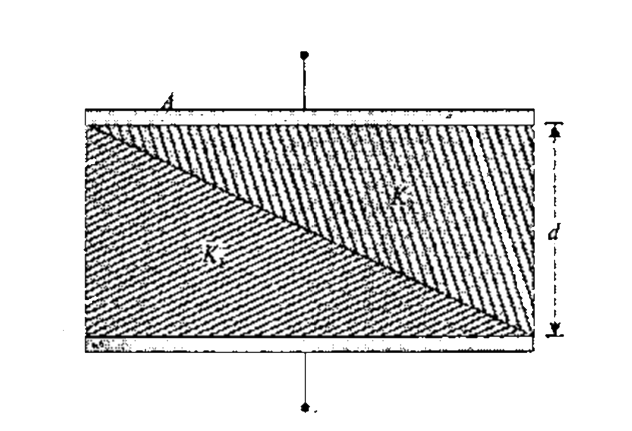 View Solution
View SolutionSpace between the plates of a parallel plate capacitor is filled with a dielectric slab. The capacitor is charged and then the supply is disconnected to it. If the slab is now taken out then
View SolutionA parallel plate capacitor has the space between its plates filled by two slabs of thickness d2 each and dielectric constant K1 and K2. d is the plate separation of the capacitor. The capacitance of the capacitor is
View SolutionA parallel plate condenser has initially air medium between the plates. If a slab of dielectric constant 5 having thickness half the distance of separation between the plates is introduced, the percentage increase in its capacity is.
View Solution

